In the ever-competitive world of compact SUVs, two strong contenders are making waves: the Nissan Qashqai and the Renault Captur. Both vehicles boast an appealing combination of style, technology, and practicality, but how do they measure up against each other? Let's dive deep into their technical specifications and innovations to see which one ultimately offers more value to potential buyers.
Nissan Qashqai vs Renault Captur – Performance, range & efficiency compared
Both models have their strengths – but which one suits you more?
Compare performance, efficiency, price and space directly: Nissan Qashqai or Renault Captur?
Performance and Powertrain
The Nissan Qashqai is available with a selection of engines including petrol MHEV and full hybrid options, delivering power outputs ranging from 140 to 190 HP. It offers a choice of transmissions, including a manual gearbox and CVT, catering to driver preferences for engagement or convenience. With a 0-100 km/h acceleration time as quick as 7.9 seconds, the Qashqai is designed for spirited driving while keeping efficiency in mind, achieving consumption figures of 6.3 to 5.1 L/100km.
On the other hand, the Renault Captur offers a variety of engine options too, including petrol, hybrid, and LPG variants. Power outputs are slightly below that of the Qashqai, with a maximum of 158 HP. The Captur's performance is commendable, with an acceleration range of 8.5 to 14.3 seconds. Fuel consumption is also impressive, with figures reaching as low as 4.7 L/100km, making it a strong choice for those focused on fuel economy.
Dimensions and Cargo Space
When examining dimensions, the Nissan Qashqai measures 4425 mm in length, 1835 mm in width, and stands 1625 mm high. Offering a trunk capacity of 504 liters, it excels in providing ample cargo space for everyday use. In addition, with a curb weight range of 1420 to 1665 kg, the Qashqai provides a sturdy base without being overly heavy.
The Renault Captur, although slightly smaller at 4239 mm in length and 1797 mm wide, still offers practicality with a respectable trunk space of 326 to 422 liters. It also features a lighter weight range from 1358 to 1522 kg. This compact design contributes to greater agility in urban settings, making the Captur a nimble choice for city driving.
Interior and Technology
Inside the Qashqai, Nissan prioritizes comfort and technology with high-quality materials and an intuitive infotainment system. The 2024 model showcases advanced features such as a customizable digital driver display, Apple CarPlay and Android Auto compatibility, and a suite of driving assistance technologies. The spacious interior comfortably accommodates up to five passengers, ensuring everyone travels in style.
The Renault Captur also impresses with its modern interior design and technology offerings. Featuring a large touchscreen display for infotainment and an array of connectivity options including smartphone integration, the Captur provides a user-friendly experience. Additionally, it comes with numerous safety features equipped to assist drivers and enhance peace of mind.
Environmental Impact
In terms of CO2 emissions, the Qashqai achieves figures as low as 116 g/km, making it an environmentally-conscious option amongst SUVs. Its various engine types work harmoniously to minimize the carbon footprint, showcasing Nissan's commitment to sustainability.
Similarly, the Captur boasts competitive emissions, with figures starting at 106 g/km. This not only aligns with modern environmental standards but also allows for potential tax benefits for eco-friendly vehicles, appealing to the green-conscious buyer.
Conclusion: Which One to Choose?
Ultimately, the choice between the Nissan Qashqai and the Renault Captur boils down to personal preference. The Qashqai shines with its robust performance, spacious interior, and excellent cargo capacity. Meanwhile, the Captur stands out for its impressive fuel efficiency, modern design, and agility. Potential buyers should consider their priorities—whether it's power and space or economy and maneuverability—as they weigh these capable SUVs against each other. No matter the choice, both vehicles embody the ongoing evolution of the compact SUV segment and are ready to meet the demands of modern lifestyles.
Here’s where it gets real: The technical differences in detail
Costs and Efficiency:
Looking at overall running costs, both models reveal some interesting differences in everyday economy.
Renault Captur has a convincingly advantage in terms of price – it starts at 20100 £, while the Nissan Qashqai costs 29400 £. That’s a price difference of around 9257 £.
Fuel consumption also shows a difference: Renault Captur manages with 4.50 L and is therefore a bit more efficient than the Nissan Qashqai with 5.10 L. The difference is about 0.60 L per 100 km.
Engine and Performance:
Power, torque and acceleration are the classic benchmarks for car enthusiasts – and here, some clear differences start to show.
When it comes to engine power, the Nissan Qashqai has a somewhat edge – offering 190 HP compared to 158 HP. That’s roughly 32 HP more horsepower.
In acceleration from 0 to 100 km/h, the Nissan Qashqai is hardly perceptible quicker – completing the sprint in 7.90 s, while the Renault Captur takes 8.50 s. That’s about 0.60 s faster.
In terms of top speed, the Nissan Qashqai performs to a small extent better – reaching 206 km/h, while the Renault Captur tops out at 180 km/h. The difference is around 26 km/h.
There’s also a difference in torque: Nissan Qashqai pulls to a small extent stronger with 330 Nm compared to 270 Nm. That’s about 60 Nm difference.
Space and Everyday Use:
Whether family car or daily driver – which one offers more room, flexibility and comfort?
Both vehicles offer seating for 5 people.
In curb weight, Renault Captur is minimal lighter – 1293 kg compared to 1420 kg. The difference is around 127 kg.
In terms of boot space, the Nissan Qashqai offers to a small extent more room – 504 L compared to 422 L. That’s a difference of about 82 L.
In maximum load capacity, the Nissan Qashqai performs minimal better – up to 1447 L, which is about 84 L more than the Renault Captur.
When it comes to payload, Nissan Qashqai slightly takes the win – 520 kg compared to 457 kg. That’s a difference of about 63 kg.
Who comes out on top?
Overall, the Nissan Qashqai shows itself to be shows small but notable strengths and secures the title of DriveDuel Champion.
It convinces with the more balanced overall package and proves to be the more versatile choice for everyday use.
 @ Nissan Motor Corporation
@ Nissan Motor Corporation
Nissan Qashqai
Nissan Qashqai
The Nissan Qashqai blends practical, family-friendly packaging with SUV styling that refuses to shout, making it a sensible and dependable choice for everyday life. It’s comfortable to live with, economical on the road, and neatly equipped enough to feel modern without ever feeling precious — perfect if you want crossover versatility without the drama.
details @ Nissan Motor Corporation
@ Nissan Motor Corporation
 @ Nissan Motor Corporation
@ Nissan Motor Corporation
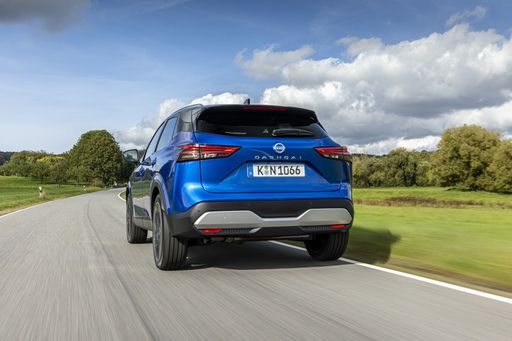 @ Nissan Motor Corporation
@ Nissan Motor Corporation
 @ Nissan Motor Corporation
@ Nissan Motor Corporation
 @ Nissan Motor Corporation
@ Nissan Motor Corporation
Renault Captur
The Renault Captur is a cheeky little crossover that pairs city-friendly agility with a roomy, well-thought-out cabin and enough style to turn heads at the lights. It’s a sensible choice for buyers who want practical versatility and a dash of personality on their daily drives, without taking itself too seriously.
details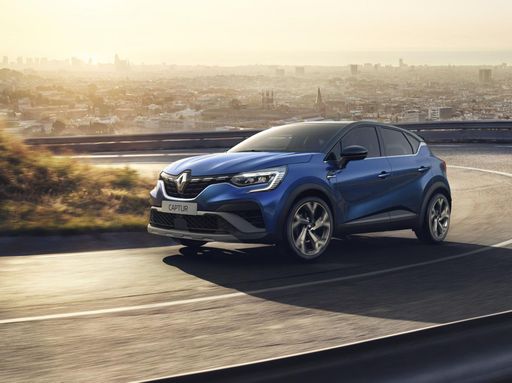 @ Renault Group Media
@ Renault Group Media
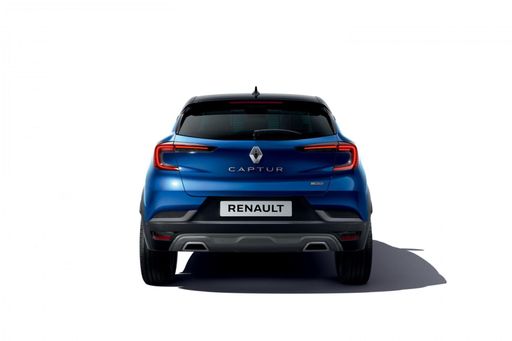 @ Renault Group Media
@ Renault Group Media
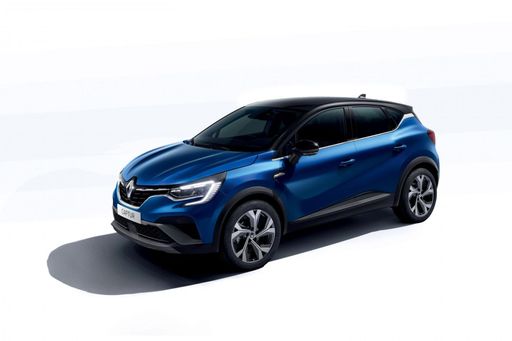 @ Renault Group Media
@ Renault Group Media
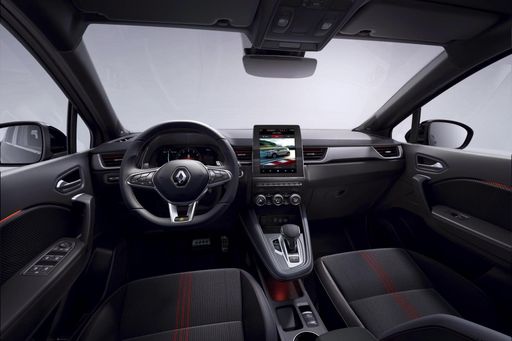 @ Renault Group Media
@ Renault Group Media
 @ Nissan Motor Corporation
@ Nissan Motor Corporation
|
 @ Renault Group Media
@ Renault Group Media
|
|
|
|
Costs and Consumption |
|
|---|---|
|
Price
29400 - 42500 £
|
Price
20100 - 28300 £
|
|
Consumption L/100km
5.1 - 6.8 L
|
Consumption L/100km
4.5 - 6 L
|
|
Consumption kWh/100km
-
|
Consumption kWh/100km
-
|
|
Electric Range
-
|
Electric Range
-
|
|
Battery Capacity
-
|
Battery Capacity
-
|
|
co2
116 - 154 g/km
|
co2
102 - 135 g/km
|
|
Fuel tank capacity
55 L
|
Fuel tank capacity
48 L
|
Dimensions and Body |
|
|---|---|
|
Body Type
SUV
|
Body Type
SUV
|
|
Seats
5
|
Seats
5
|
|
Doors
5
|
Doors
5
|
|
Curb weight
1420 - 1665 kg
|
Curb weight
1293 - 1514 kg
|
|
Trunk capacity
479 - 504 L
|
Trunk capacity
326 - 422 L
|
|
Length
4425 mm
|
Length
4239 mm
|
|
Width
1835 mm
|
Width
1797 mm
|
|
Height
1625 mm
|
Height
1575 mm
|
|
Max trunk capacity
1422 - 1447 L
|
Max trunk capacity
1276 - 1363 L
|
|
Payload
466 - 520 kg
|
Payload
376 - 457 kg
|
Engine and Performance |
|
|---|---|
|
Engine Type
Petrol MHEV, Full Hybrid
|
Engine Type
Petrol MHEV, Petrol, Full Hybrid
|
|
Transmission
Manuel, Automatic
|
Transmission
Manuel, Automatic
|
|
Transmission Detail
Manual Gearbox, CVT, Reduction Gearbox
|
Transmission Detail
Manual Gearbox, Dual-Clutch Automatic, Automatic Gearbox
|
|
Drive Type
Front-Wheel Drive, All-Wheel Drive
|
Drive Type
Front-Wheel Drive
|
|
Power HP
140 - 190 HP
|
Power HP
91 - 158 HP
|
|
Acceleration 0-100km/h
7.9 - 10.2 s
|
Acceleration 0-100km/h
8.5 - 14.3 s
|
|
Max Speed
170 - 206 km/h
|
Max Speed
168 - 180 km/h
|
|
Torque
240 - 330 Nm
|
Torque
160 - 270 Nm
|
|
Number of Cylinders
3 - 4
|
Number of Cylinders
3 - 4
|
|
Power kW
103 - 140 kW
|
Power kW
67 - 116 kW
|
|
Engine capacity
1332 - 1497 cm3
|
Engine capacity
999 - 1789 cm3
|
General |
|
|---|---|
|
Model Year
2024
|
Model Year
2024 - 2025
|
|
CO2 Efficiency Class
E, D
|
CO2 Efficiency Class
D, C
|
|
Brand
Nissan
|
Brand
Renault
|
Is the Nissan Qashqai offered with different drivetrains?
Available configurations include Front-Wheel Drive or All-Wheel Drive.
The prices and data displayed are estimates based on German list prices and may vary by country. This information is not legally binding.
